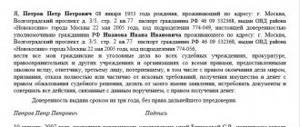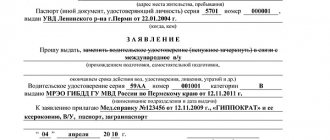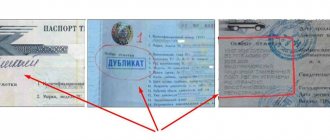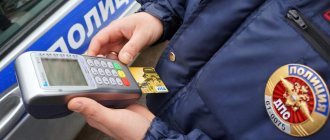Good afternoon, dear reader.
In this article we will talk about PTS - vehicle passport. This document contains complete information about the vehicle and its characteristics, as well as a complete list of vehicle owners.
A driver rarely needs a PTS. 99 percent of drivers generally use this passport only 2 times: when buying a car and when selling it.
In this article you will learn:
- What information does the PTS contain? How many seats are there for owners in the PTS?
Let's get started.
Contents of the vehicle passport
The vehicle passport is a double-sided document in A4 format. It is assumed that the PTS will be folded in half and it will look like a little book:
The picture above shows the front side of a car passport .
The right side provides detailed information about the vehicle. This part is filled out by the organization that issues the vehicle passport: the manufacturer, customs authorities or traffic police authorities.
How many seats are there for owners in the PTS?
The left side of the form contains 2 large rectangles intended for entering the owners of the vehicle. Another 4 similar rectangles are contained on the back of the PTS, i.e. The maximum number of owners in the PTS is 6 . If a car often changes owners and the free space has run out, then the current owner must contact the traffic police to replace the title.
Replacing a vehicle passport
The series and PTS number are indicated on the front side of the document in two places: at the top of the right column and in the middle of the left column. The series and number are printed in red, so they are immediately noticeable.
Often, the car owner cannot find the date of issue of the PTS. It is located in the lower right part of the front side of the form, in field number 25 (next to the seal).
A few words about the passport form . This document has a high degree of security; on the front and back there are holograms with very fine details. The background of the document also contains numerous patterns. However, PTS are often counterfeited and below I will talk about how to check the document before buying a car.
Photo of the document
The registration certificate looks like a small laminated sheet of paper (old sample), or like a pinkish plastic card (new sample). It is protected by a hologram, which is located on the reverse side at the top. Below it are written the series and number that match the series and number of the PTS. The entries regarding the technical characteristics of the car are also the same.
All Russian inscriptions are duplicated in Latin.
Below are photo examples of what this document looks like:
Duplicate and original PTS
The original PTS is a document issued by the manufacturer or customs authorities (when importing a car from another state).
A duplicate PTS is a document issued by the traffic police to replace a lost one or a passport that has run out of space. At the same time, there is a very big difference between the listed options from the point of view of the car buyer.
To distinguish the original from a duplicate, you need to check who issued the document. To do this, look in the lower right corner of the passport and find field 23 “Name of the organization that issued the passport.” If the traffic police department is indicated in this field, then you have a duplicate. You can also pay attention to the seal of the organization. The stamp of the State Traffic Inspectorate is placed on the duplicate.
If in the lower right corner the data of the manufacturer or customs organization is indicated, as well as their stamps, then this is the original.
If you are holding a duplicate PTS in your hands, then pay attention to the special marks on the right side of the front side of the PTS. There may be the following information:
- The PTS was issued to replace the scrapped one . This means that the previous PTS ran out of space and the owner replaced it with a new one at the traffic police. At the same time, the old passport was handed over to the traffic police officers.
- The PTS was issued to replace the lost one . This means that the old passport was not handed over to the traffic police, i.e. The PTS was issued to replace the lost one. When buying a car, you need to pay special attention to this option.
Let's look at what this or that version of PTS threatens us with when buying a car on the secondary market:
- The original is the best option, you can view all previous owners.
- A duplicate that was issued a long time ago and already has several owners. Also a good option. It means that the traffic police previously had no problems with this PTS.
- A duplicate to replace the scrapped vehicle title, which was issued recently. This is a normal option, because... sooner or later the place in the PTS may run out.
- A duplicate to replace the lost PTS, which was issued recently. This option is not recommended. On the one hand, this type of passport may appear, for example, if the car owner’s documents were destroyed by fire. On the other hand, various criminal schemes may be hidden behind it.
Let's look at a few examples.
1. A duplicate can be obtained in order to hide the previous owners of the car, one of which is the insurance company. This means that the car for sale was previously involved in an accident, where it received very serious damage and could not be restored. The insurance company paid compensation to the owner and took the car for itself. After this, the car was bought by a reseller and hastily restored. To hide information about an accident, the reseller “loses” the title and receives a new one from the traffic police.
2. A duplicate can also be obtained if the original serves as collateral. For example, a PTS may be stored in a bank where the previous owner did not repay the loan. There may be other property disputes. For example, a married couple is going through a divorce. At the same time, the title remains with the wife, but the husband actually uses the car. The husband can get a duplicate title and sell the car secretly from his wife.
In general, buying a car that has recently been issued a duplicate title is highly not recommended. As for the other options, they also do not guarantee an ideal vehicle history. Nevertheless, the likelihood of encountering problems is greatest in the case of a duplicate issued to replace a recently lost title. There is no point in buying a car with such documents.
Where can I see who issued it and when?
The columns “Who issued the PTS”, as well as when it was issued, can be seen in the document itself on the front side, where the series and number are written at the top, and then there is data about the car. The citizen needs information from the last 2 lines. This indicates not only the name of the organization that issued the document, but also its address. These boxes are most often marked with a wet seal from the organization that issued the document. Therefore, its name can be confirmed by deciphering the seal. This could be the traffic police, the manufacturer, the customs service or another organization. A technical passport is issued by Russian authorized bodies even in cases of purchasing a vehicle abroad. In this case, the responsibility for registering the car lies with the customs service after the owner pays the state duty.
How to restore a lost PTS?
Let's look at the situation from the other side - through the eyes of the seller. If the PTS is truly lost, then it should be restored. In this case, the procedure is completely similar to replacing a passport:
Replacing PTS
To restore a lost PTS you will need the following documents:
- Statement.
- Car owner's passport.
- Old registration certificate, if it is not lost along with the PTS.
In addition, there must also be:
- OSAGO insurance has been issued (it is not necessary to provide a policy);
- state fees have been paid for issuing a PTS and a new registration certificate (800 + 500 rubles).
You should contact any registration department of the traffic police with the above documents.
However, I would like to remind you once again about the information given above. If you restore the title to replace the lost one, then savvy buyers will avoid the car. So, before receiving a duplicate, try to find the original PTS. Check all possible places where your passport could have been lost.
If you still cannot find the document, you will have to restore it to the traffic police. At the same time, there is an opportunity to reduce the negative effect for car buyers. A photocopy of the original PTS, made in advance, will help you with this. In general, you need to make a copy immediately after purchasing a car, but if you still don’t have one, then make a copy without delay . Most likely it will not be useful, but it is better to take this point into account.
When you meet a potential buyer, show him a duplicate PTS and a photocopy of the original, and then offer to check the car’s registration history on the official website of the traffic police. The buyer will be able to see that the information in the photocopy matches the information in the police database. Confirmed data from previous owners will help resolve some of the questions.
What it is?
A vehicle registration certificate, or STS (vehicle registration certificate), confirms that the vehicle is registered and belongs to the person with the passport data entered on it. It is issued by the traffic police when the car is registered or when the car’s owner changes.
Because, unlike a PTS, a registration certificate is issued to the owner, and not to the vehicle.
This must be done within 10 days after taking ownership.
When a car is sold at a dealership, along with it the new owner receives a full package of documents necessary for registration of the STS, namely:
- PTS.
- Completed purchase and sale agreement.
- An invoice indicating the cost of the vehicle.
They must be brought to the traffic police at your place of residence and write an application, and within the specified period come for a registration certificate and license plates.
Checking the title when buying a car
Above it was said that there are two versions of PTS: original and duplicate. However, there is another option that can also be found in practice - a fake PTS .
Buying a car with a fake passport can cause serious problems for the buyer. Most often, the matter ends with the fact that the car cannot be registered with the traffic police, because he is listed as stolen. After this, the car is either returned to its rightful owner, or left to the buyer for safekeeping until the owner shows up. In any case, the buyer is left without a car and without money.
Let's figure out how to identify a fake PTS in practice.
Visual inspection of the document
People who constantly deal with PTS can identify a fake from a distance of several meters. If you have never dealt with passports, I recommend using a sample.
Take the original PTS from any other car (relative, friend) and carefully compare both passports. In this case, you need to pay attention to both the quality of the form itself and the quality of the inscriptions applied. Use a magnifying glass to check thoroughly.
However, if you are not confident in your own abilities, use the second option.
Checking PTS at the traffic police post
In any case, this option is optimal. Together with the car seller, go to the nearest traffic police post and ask the traffic police officers to check the documents and run them through the databases; they will not refuse you. Traffic police officers constantly deal with car documents, so they can easily identify a fake.
In this case, another problem may arise. What to do if the seller refuses to go to the traffic police post? It's very simple, you should stop buying a car. A normal car owner has nothing to fear.
Methods for checking PTS on site
Inspect the protective elements
Take the form in your hands. You will also need a magnifying glass and a flashlight. In this data sheet:
- You will see the RUS watermarks in the light.
- The hologram does not stick out and has clear boundaries.
- In the corner above the hologram there is the signature “PTS”. To see it, shine a flashlight on the paper and tilt the document slightly away from you.
- The microtext, when magnified with a magnifying glass, is the continuous inscription “vehicle passport”.
- When changing the viewing angle, the volumetric pattern changes color from green to gray.
Auto expert Nikita Orlov, CEO of Podberi - Auto . Ru :
— Just below the words “vehicle passport” there is a patterned line that reaches the middle of the form and is invisible, but clearly felt by the fingers in the form of this very pattern. Also, the PTS glows in ultraviolet light with fluff, like on banknotes.
Experienced crooks don’t get caught on security elements because they use original forms: they steal new ones from Goznak or find a fake car with a normal title.
Check the data
In addition to information about the owners of the car, the registration document contains: number and series, VIN of the car, make, model and type of vehicle, category (a, b, c, ...), year of production, model and engine number, chassis, frame, number and color body, power, displacement and type of internal combustion engine, permissible maximum vehicle weight, unloaded weight, country of origin, environmental class, country of export, series and number of the customs declaration, customs restrictions, address of the vehicle owner, name and address of those who issued the PTS , as well as the date of issue.
PTS is fake if:
- The registration number does not match the code of the region where it was issued. The number in the photo below is correct:
- The VIN on the form does not match the car's. Finding out the VIN number is easy: on modern cars it is located in a special frame behind the windshield and on the driver's door pillar. It is also left in the form of a plate on the car engine, on the dashboard or under the floor trim, it depends on the manufacturer.
- The year the form was created is less than the year the passport was issued.
What is also important: be careful if the owners change each other too quickly. The car may be in collateral or faulty.
How to fill out a title when selling a car?
Let's consider another important issue related to PTS. We are talking about adding a new owner after concluding a car purchase and sale agreement.
In fact, there is nothing complicated here. Select the following free rectangle to enter the new owner (the back side of the title is filled in first, then the front side) and enter the buyer’s data into it:
1. In the “Owner Full Name” field, write down the buyer’s last name, first name and country. The recording can be made with a ballpoint pen.
2. In the “Address” field, indicate the buyer’s place of registration, indicated in his passport.
3. In the “Date of sale” field, indicate the date the car was transferred to the new owner.
4. In the “Document of ownership” field, enter the name of the agreement. If the car is for sale, then write “purchase agreement”. If the car is being given as a gift, please enter the “deed of gift” entry.
5. In the “Signature of the previous owner” field, put your signature (signature of the seller).
6. The buyer must sign in the “Signature of the present owner” field.
There is no need to enter other data into the PTS; everything else will be filled out by traffic police officers when registering the vehicle.
Instructions for registration of PTS
Correction of information: list of references
Now it is clear how to restore a PTS if lost. This is far from the most difficult operation that car owners face.
As already mentioned, a person can make adjustments to the technical passport of a car if necessary. Such an operation involves a certain amount of paperwork.
What will the owner of the vehicle need? Usually the package of documents changes depending on the situation. Most often, the applicant needs to prepare:
- title certificate for the vehicle;
- the basis for making adjustments (sale and purchase agreement, certificates of change of full name, statements of marriage or divorce, and so on);
- the applicant's civil passport;
- a check for payment of state duty to the state treasury;
- application for adjustment of the technical passport;
- certificate of registration with the traffic police (if available);
- car insurance policy (if any).
Among the additional extracts it is customary to highlight:
- certificates from the applicant’s place of residence;
- death certificate of the testator;
- certificates of relationship with the testator;
- extracts from a notary indicating acceptance of the inheritance;
- will (if any);
- a payment document indicating the fact of payment for the purchased transport;
- an extract from the technical inspection of the car.
As practice shows, all the above papers are sufficient. If the registration certificate for a car is lost, it will have to be restored as soon as possible. Otherwise, you won’t be able to make a single transaction with the car.
Important: when the title is restored, the owner is given a car passport marked “Duplicate”. There is no way to get rid of it.
How to add a new owner
It is the order of the Ministry of Internal Affairs No. 496 that establishes the procedure for preparing the contents of the document (technical characteristics of the car and details about the owner), therefore the standard registration procedure takes place in accordance with the requirements of this official order. According to the regulations, immediately after affixing signatures to the purchase and sale agreement, the next step is to fill out special fields in the PTS form, which guarantees the fact of transfer of ownership rights to the buyer.
The listed fields can be filled in independently by the car buyer in a specialized company that compiled the transaction or in the traffic police department during re-registration. But the last column in this list is filled out exclusively by employees of the State Traffic Inspectorate.
In order to avoid serious troubles and conflict situations in the future, auto experts strongly recommend that sellers, after concluding an agreement, make a photocopy of the passport and store it together with the original agreement. If the car's title is not damaged, has a satisfactory appearance and free space for new entries, then no additional actions are required.











